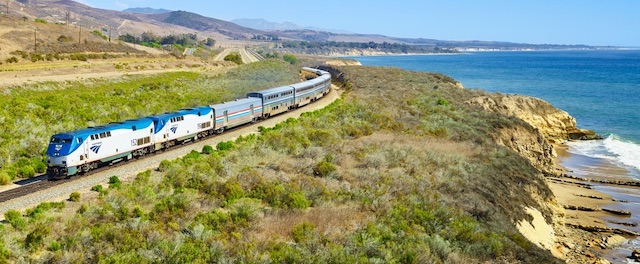
One of the candidates for president in this November’s election is known by the nickname, “Amtrak Joe.” The Democratic-controlled House wants to triple federal funding for intercity passenger trains. A member of Congress from Massachusetts has proposed spending $205 billion on high-speed rail.
Click to download a five-page PDF of this policy brief.
Given the growing momentum behind these ideas, it is instructive to take a look at how well the last frenzied spending on intercity passenger trains worked. In 2009 and 2010, President Obama persuaded Congress to dedicate $10.1 billion to high-speed rail projects around the country. To this was added at least $1.4 billion in other federal funds and at least $7 billion in state and local funds. After ten years, some of those projects must be working, right?
Of course not. Outside of Amtrak’s Northeast Corridor, there are still no trains in America that could be called high-speed trains by any definition. Trains in the Northeast Corridor are, if anything, going slower than they were before. Most corridors where high-speed rail money was spent see trains going no faster and no more frequently than they were before the grants were given out. Aside from new service to two small towns in Maine, a modest speed-up of trains in Vermont, and the addition of two daily trains between Raleigh and Charlotte, the nation has little to show for more than $18 billion in the federal and state spending.
The California Debacle
As is well known, the California high-speed rail project is incomplete and out of money. The project got its start in 2008 when the California High-Speed Rail Authority, chaired by former state senator Quentin Kopp, persuaded voters to approve the sale of $9 billion worth of bonds to build the system, which was then projected to cost about $33 billion. Proponents claimed that private investors, the federal government, and others would come up with the rest of the funds. As a safeguard, no bonds could be sold unless they were matched by someone else.
No private investors materialized, but California scored almost 40 percent of Obama’s high-speed rail funds. In a purely political move, one of the Obama grants came with a requirement that construction should commence in California’s Central Valley, where two Democratic congressmen were fighting close re-election campaigns. The federal grants plus some local government funding allowed the state to sell about $5 billion dollars worth of bonds, giving it $10 billion. Costs quickly rose above projections with the latest estimate being $80 billion. California’s governor has said he has no intention of spending any more state money and even Quentin Kopp has backed away from the project.

The Coast Starlight in California. Amtrak photo.
The one Amtrak train connecting Los Angeles with the Bay Area still trundles along at an average speed of less than 39 miles per hour. Result: $4 billion federal dollars and at least another $6 billion state and local dollars wasted.
Read the rest of this piece at The Antiplanner.
Randal O’Toole is a senior fellow with the Cato Institute specializing in land use and transportation policy. He has written several books demonstrating the futility of government planning. Prior to working for Cato, he taught environmental economics at Yale, UC Berkeley, and Utah State University.
Photo credit: California High-Speed Rail Authority via Wikimedia under Public Domain.












